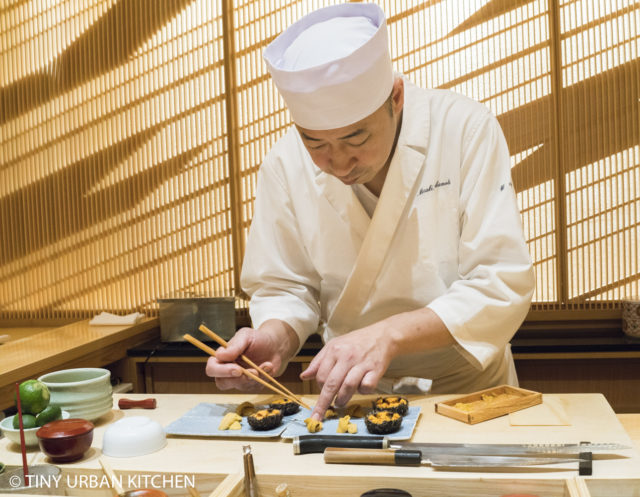
Sushi Nakamoto Hong Kong
I have a friend who is sort of my "eyes and ears" of the food scene in Hong Kong. We are both obsessed about sushi, so we often explore and try out new sushi places together. Perhaps because he works in the food and beverage industry (and because he can also read Chinese fluently), he tends to hear the latest sushi news (like, for example, the opening of Sushi Saito in Hong Kong), well before I find out.
Lately, my sushi-dining friend has been really excited about Sushi Nakamoto Hong Kong, a relative newcomer to Central. Nakamoto-san worked at Tokyo's Michelin starred Ichiyanagi and Sushi Sase in Hong Kong before opening up his own place. Sushi Nakamoto serves traditional Edomae style sushi and only serves omakase set menus.
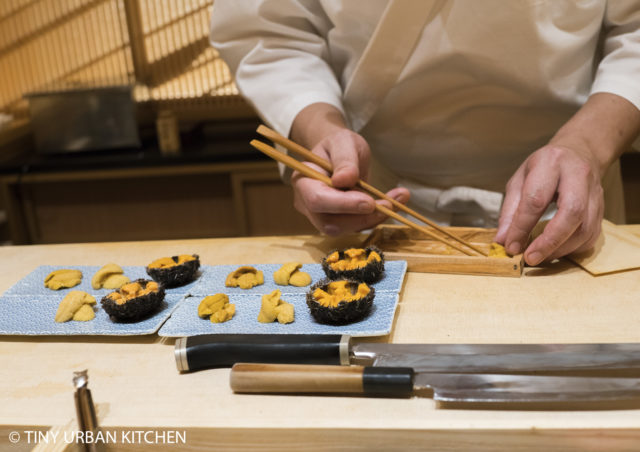
My friend loves nigiri sushi and especially enjoys Sushi Nakamoto because he offers a sushi-only omakase during dinner. Most restaurants will add in other appetizers and sashimi to a dinner omakase. In some cases, like Sushi Shikon, these appetizers are exceptional and really make the restaurant stand out.
If you're a purist and a pure nigiri sushi lover, however, you may have a harder time. Sukiyabashi Jiro is one notable restaurant that serves only nigiri for its dinner omakase menu. This, however, is not the norm.
As a result, it was a pleasant surprise for my friend when he found out that Sushi Nakamoto also offers a nigiri-only omakase dinner. We went together to try it out.
Here's a look at our omakase nigiri meal!
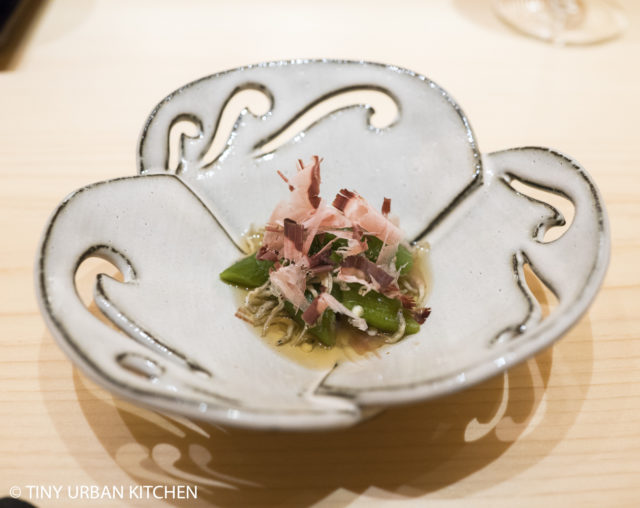
We began with a simple light salad topped with shaved bonito flakes. This would be the only non-sushi course in the entire meal.
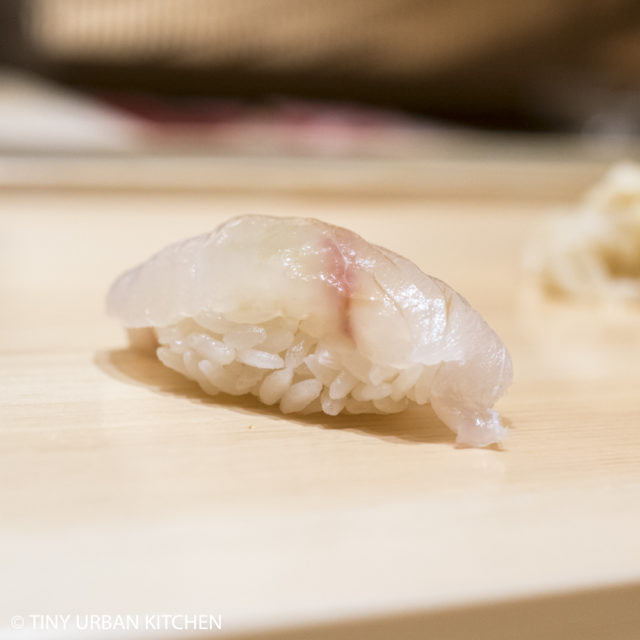
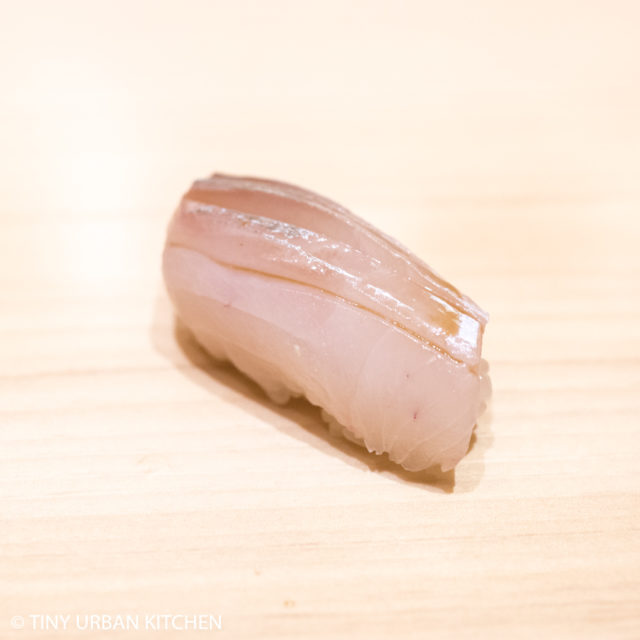
hirame (olive flounder) and shima aji (striped jack)
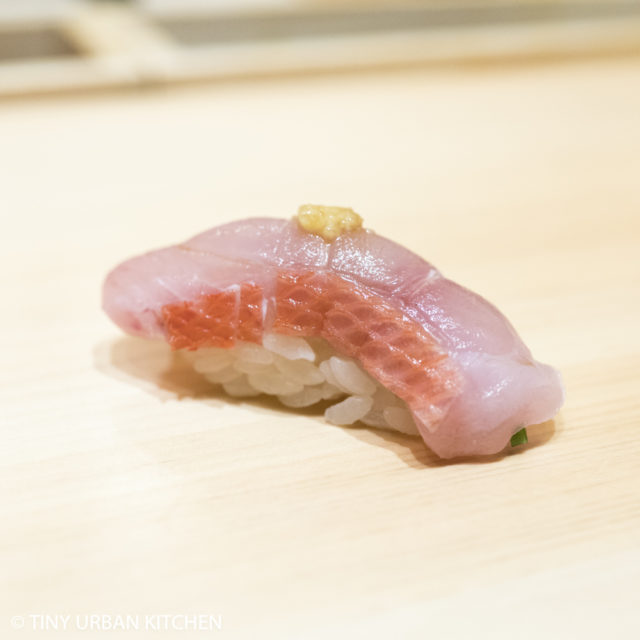
kinmedai (golden eye snapper)

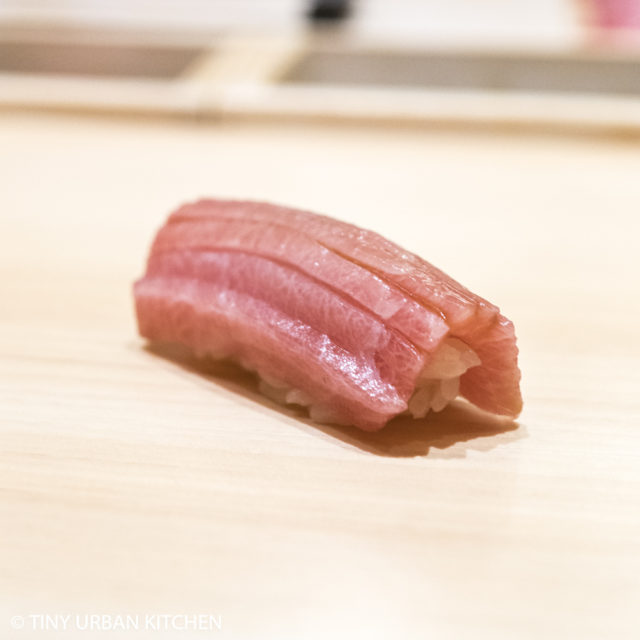
akami (tuna) and otoro (fatty tuna)
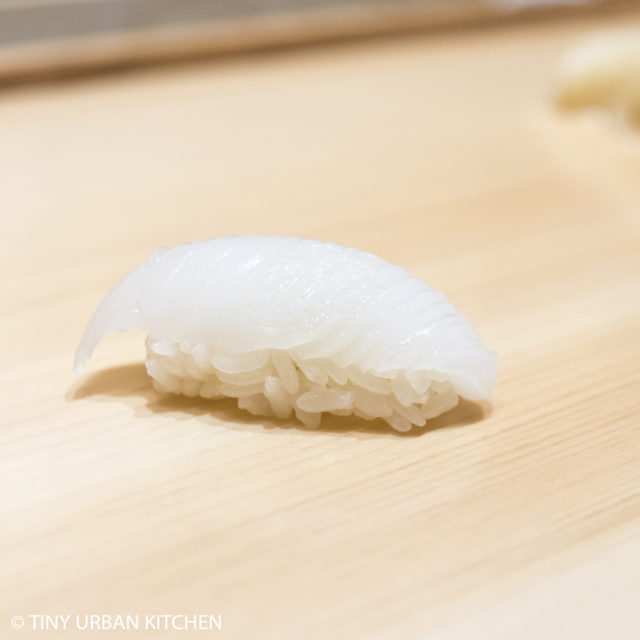
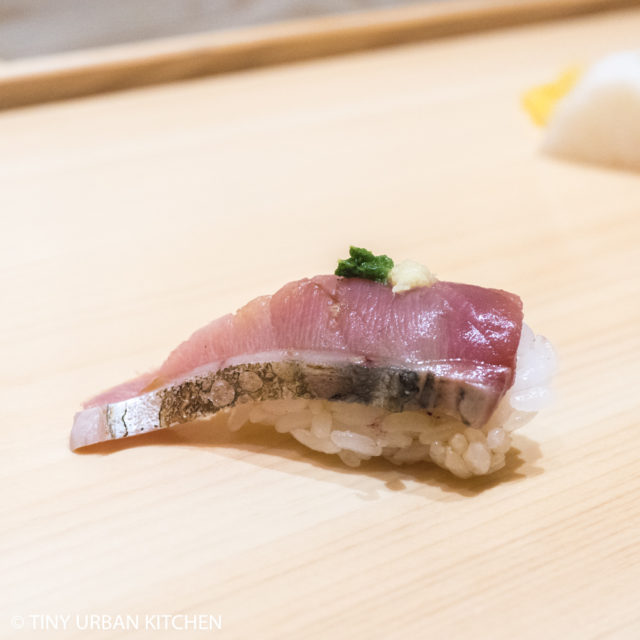
ika (squid) and bonito (skipjack tuna)
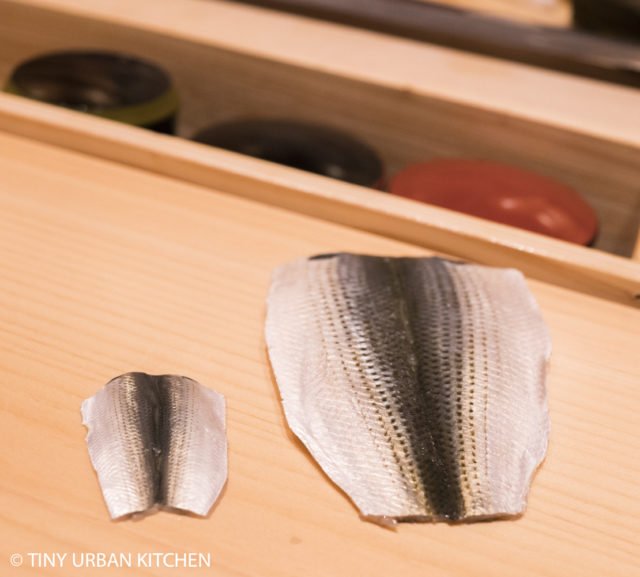
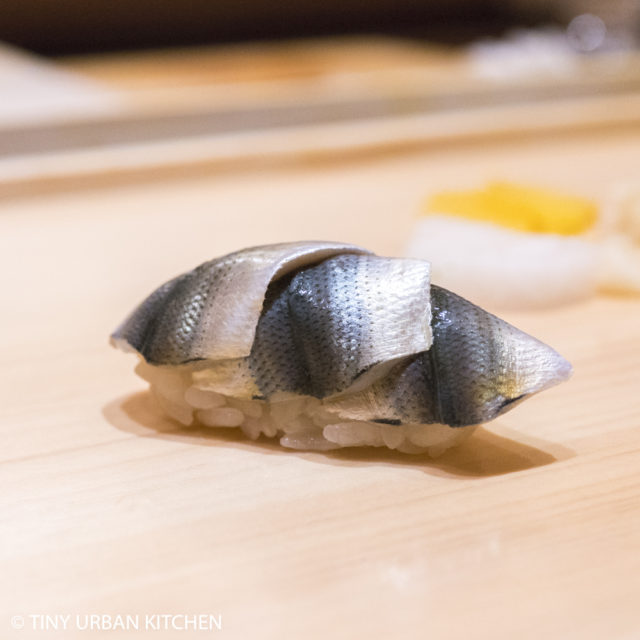
Chef Nakamura explained to us that there are many types of mackerel. He showed us the comparison of the two different sizes. From the short season between July and September, shinko, or young gizzard shad, is briefly available. Shinko is quite expensive and tricky to marinate consistently, since the pieces are so small.
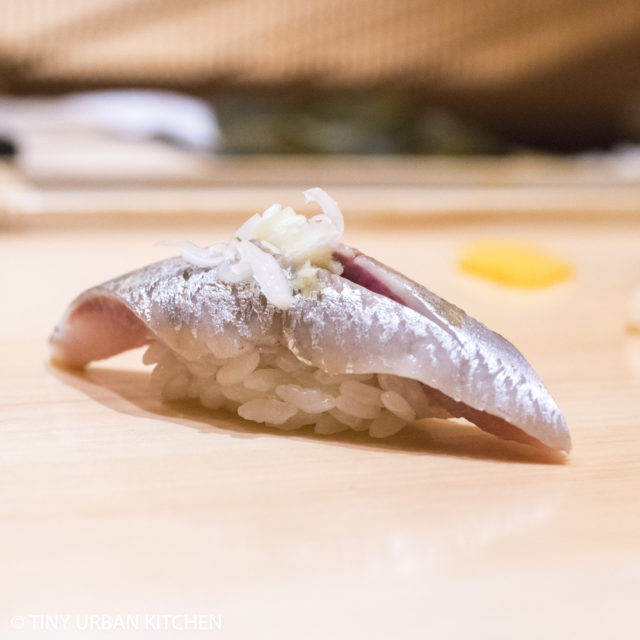
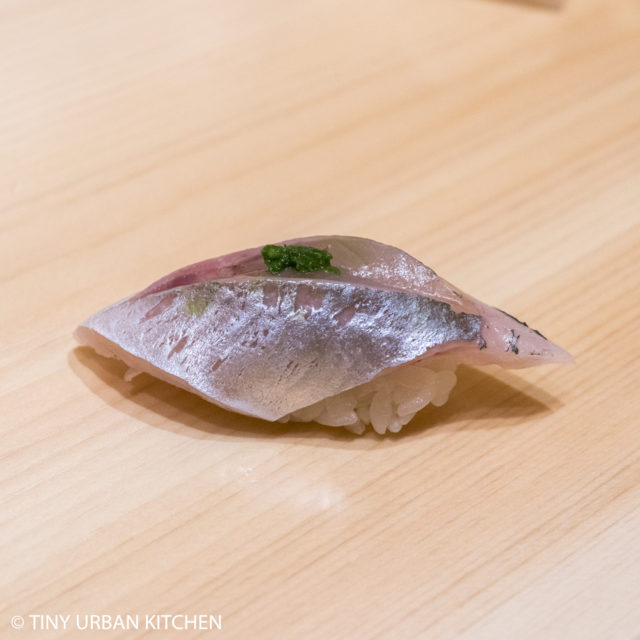
iwashi (sardine) and aji (horse mackerel)
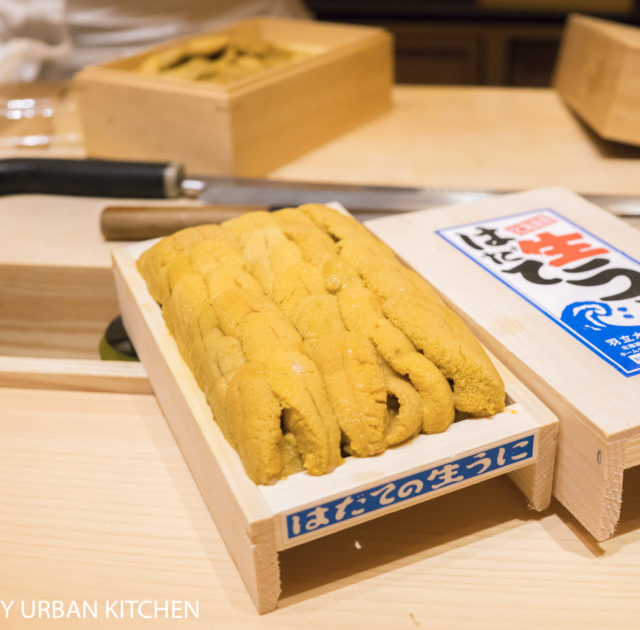
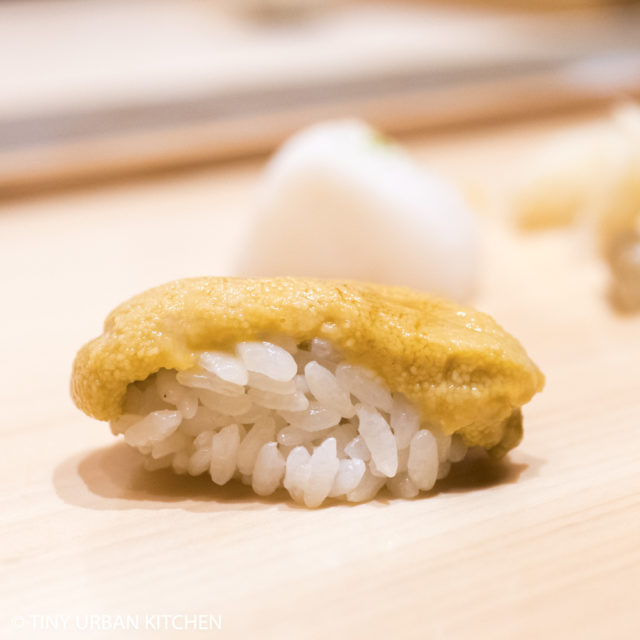
Murasaki uni have purple colored spiky shells and have a mild flavor compared to their bafun counterparts which are deeper orange in color and have an more intense flavor. This particular one was sweet, creamy, and tasted great over rice.
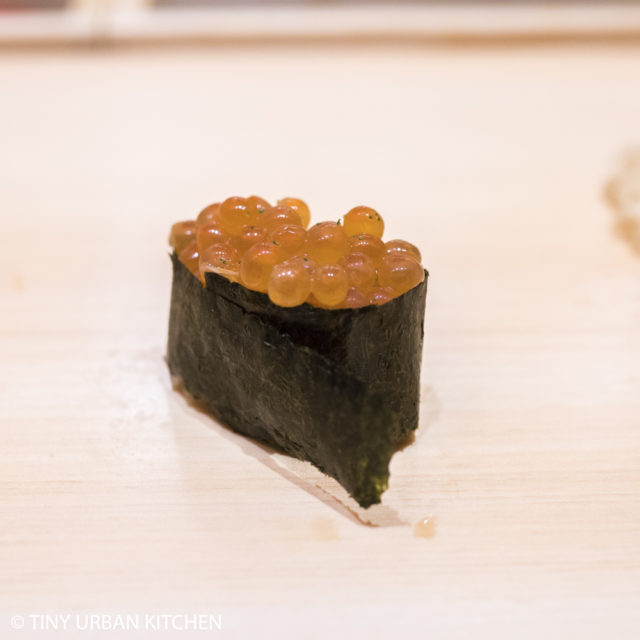
ikura (salmon roe)
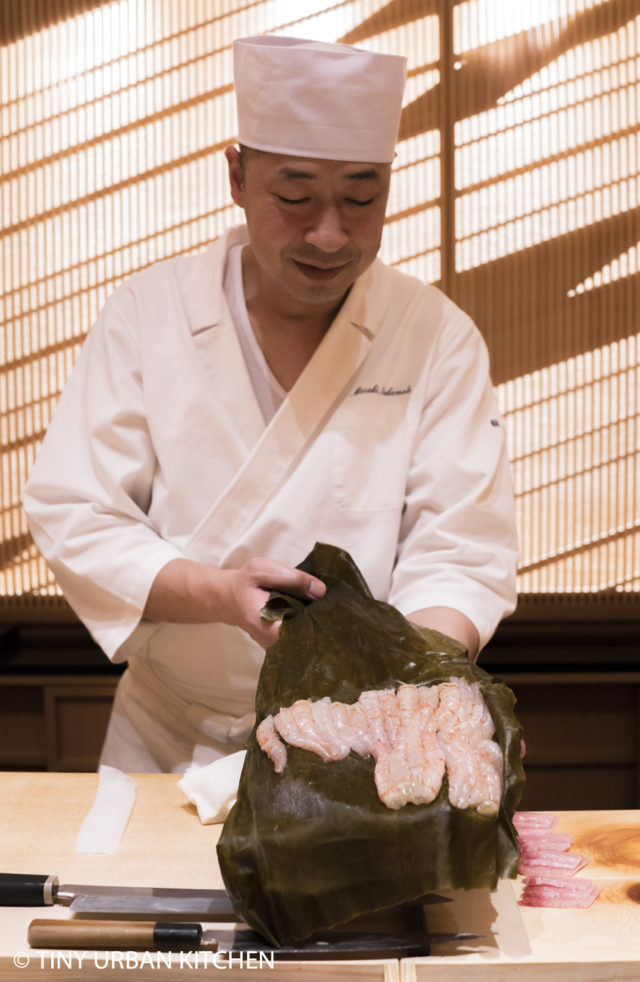
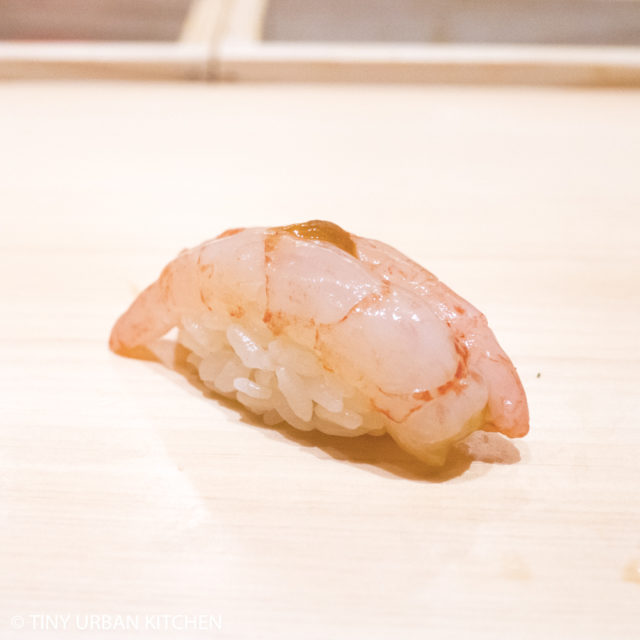
Chef Nakamoto showed us how he cures his ebi (sweet shrimp) in kombu (seaweed). The resultant kombu-cured ebi has a nice, salty essence imparted from the seaweed.

Next we had a slice of a large scallop, which has a unique harder, tougher texture than smaller scallops.
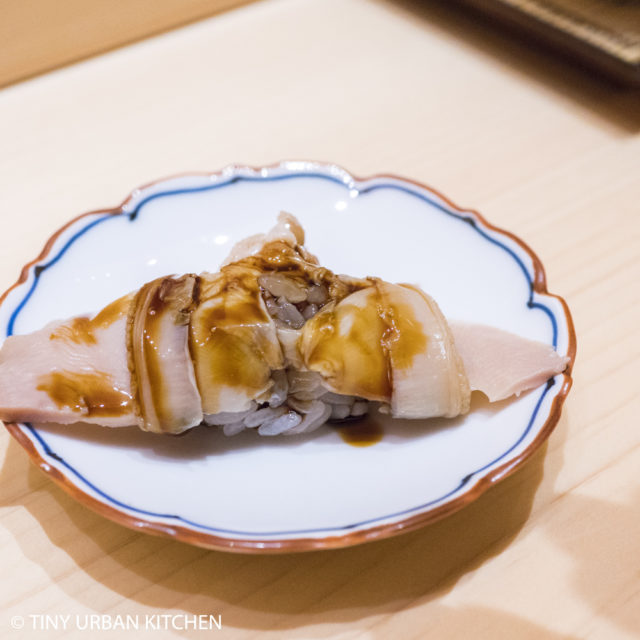
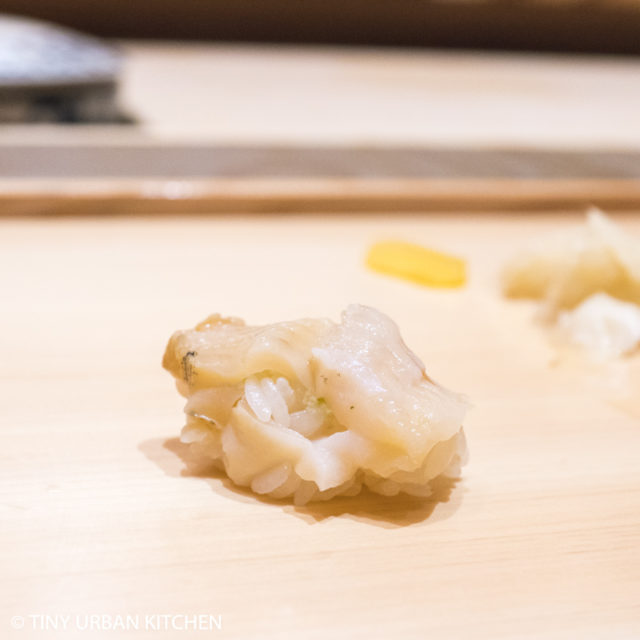
We ended with two shellfish pieces, one hamaguri (clam) and another one which I don't remember.
Sushi Nakamoto Hong Kong - General Thoughts
In general, Sushi Nakamoto Hong Kong is a great and worthy addition to the sushi scene in Hong Kong. Chef Nakamoto serves excellent quality sushi in a very traditional, Edomae style. He sources his fish from Tsukiji Fish Market (now Toyosu Fish Market) and uses traditional techniques. He's as gentle and friendly man, happy to interact with his diners and explain various things about the fish.
It's not quite up there with the top top sushi places in Hong Kong (Sushi Shikon, Sushi Saito), but it's still very good and much more affordable. Unlike the aforementioned two restaurants, which hover between HKD3200 and HKD 3500 for a dinner omakase, you can get a nice 15-piece meal for HKD1100 or an 18 pieces meal for HKD135o. In short, it's a great value for very, very good authentic edomae sushi.
Highly recommended!
Sushi Nakamoto Hong Kong
10 Pottinger St, Central
This is the forty-second post in the updated #50Postsin50Days – Take 2 Challenge. Other posts in this series will be added to the bottom of the original post.












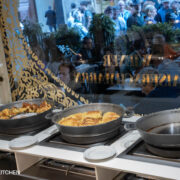
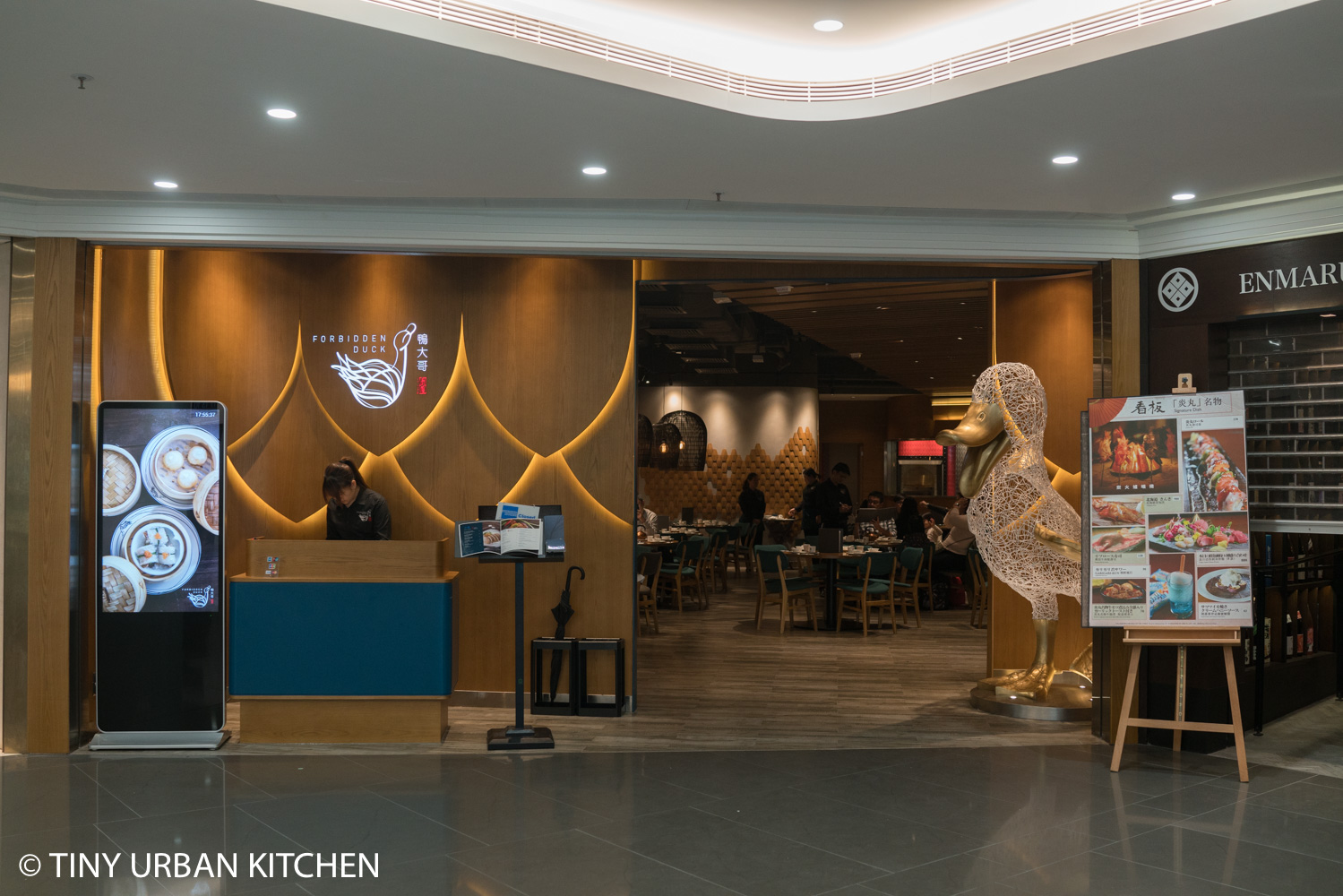
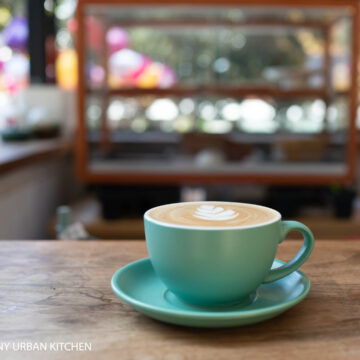
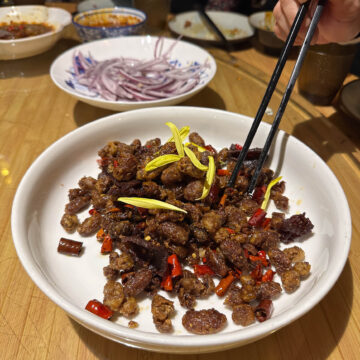
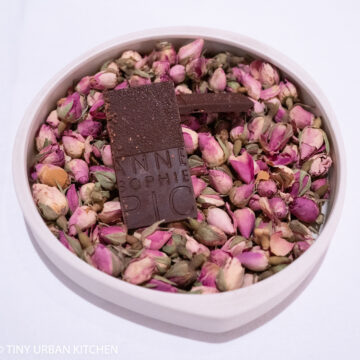
[…] Santé Wine Bar (Spanish/French) Arcane (European) 8 1/2 Otto e Mezzo Bombana (Italian) Sushi Nakamoto (Edomae […]